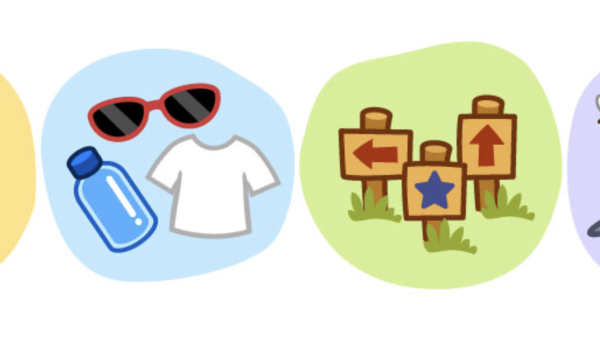Engineering student combines gaming, Fitbit tech to address childhood obesity

Courtney Van Bussum's startup FitStart Kids, a unique healthy-living tool for children struggling with obesity.
A self-proclaimed hippie from Boulder, Colorado, ASU student Courtney Van Bussum is a locavore and at her happiest when hiking, perusing farmers markets, or practicing and teaching yoga as a certified yoga instructor.
“The general consensus in Boulder, Colorado, is that if you aren’t outside hiking or inside doing yoga, you’re probably doing something wrong,” said Van Bussum who will be a junior in the fall, majoring in biomedical engineering at Arizona State University’s Ira A. Fulton Schools of Engineering within Barrett, The Honors College.
It was only natural then, that health and wellness became a driving force for Van Bussum’s startup FitStart Kids, a unique healthy-living tool for children struggling with obesity. It combines wearable activity-monitoring technology with mentorship, education and built-in gamification to help children adopt a healthy mindset.
In 2012, more than a third of American children were categorized as obese or overweight. Worldwide, children are spending more than two hours looking at screens, exceeding the suggested limit by pediatricians. Van Bussum wanted to harness children’s growing obsession with technology to bring about a behavior change.
“I like to say FitStart Kids is changing the ‘game,’” she said. “We are expanding upon the world of virtual gaming by directly integrating fitness into the game itself. We are leveraging youth’s fascination with technology to shift gaming systems from being a reason for hours spent sitting in front of a screen, to instead act as the catalyst to get kids moving."
Here’s how it works: FitStart Kids uses Fitbit activity trackers to equate steps to incentives and rewards that can be used to buy upgrades, bonuses or new features within the virtual game environment. Participants design their own unique character or avatar in the game, are paired with a mentor, and placed on a virtual team. They can challenge teammates and compete against other teams to win prizes, while receiving bonuses from answering health questions and meeting nutrition goals.
Brent Sebold, who is the director of the Fulton Engineering Startup Center and has mentored Van Bussum and team, said that even though FitStart Kids is still in its initial developmental stages, it’s gaining momentum.
“Courtney was recently selected as the Student Innovation Winner for the Social Venture Partners Fast Pitch Challenge, winning $2000 toward the venture,” he said. “As part of Fulton Schools’ Prescott Fellows program, she also flew to Silicon Valley with other ASU students to meet and gain advice from successful entrepreneurs, startups and incubators.”
Additionally, Van Bussum is also one of only 22 students from across the country selected by the Women’s Business Enterprise National Council to be part of their 2015 Student Entrepreneur Program cohort and one of the five finalists at the program’s pitch competition.
According to Scott Shrake, director of the EPICS (Engineering Projects in Community Service) program, FitStart kids has come a long way since starting as an EPICS design challenge that focused on finding creative ways to help combat childhood obesity.
“Courtney has been passionate and focused on making a difference in the area of health, and the EPICS program has given her a vehicle to let her true talents and abilities shine,” said Shrake. “She’s a rock-star and I can’t wait to see what else she accomplishes.”
Van Bussum credits the extended community she found at ASU for her success thus far.
“It is only with the help and support of the passionate individuals I have met at ASU that I have even gotten this far,” she said. “I would encourage any student who wants to make a startup idea happen or anyone who wants to be on a startup team to just start. The experience and insights gained alone are invaluable.”
More Science and technology

Advanced packaging the next big thing in semiconductors — and no, we're not talking about boxes
Microchips are hot. The tiny bits of silicon are integral to 21st-century life because they power the smartphones we rely on,…

Securing the wireless spectrum
The number of devices using wireless communications networks for telephone calls, texting, data and more has grown from 336…

New interactive game educates children on heat safety
Ask A Biologist, a long-running K–12 educational outreach effort by the School of Life Sciences at Arizona State University, has…